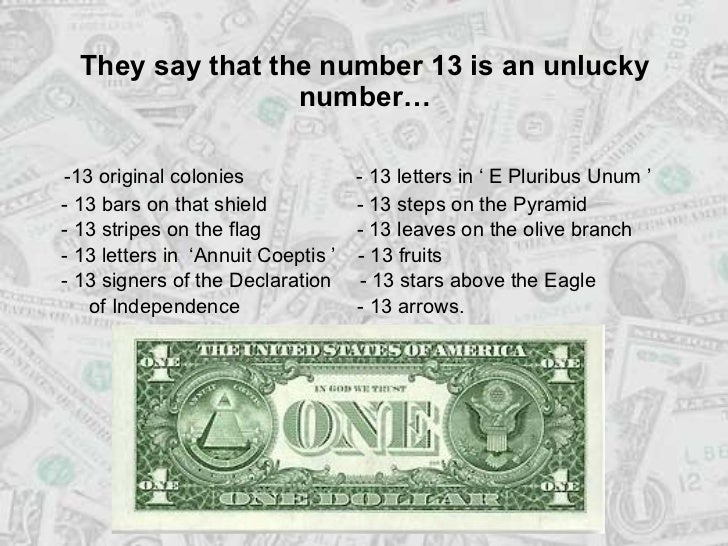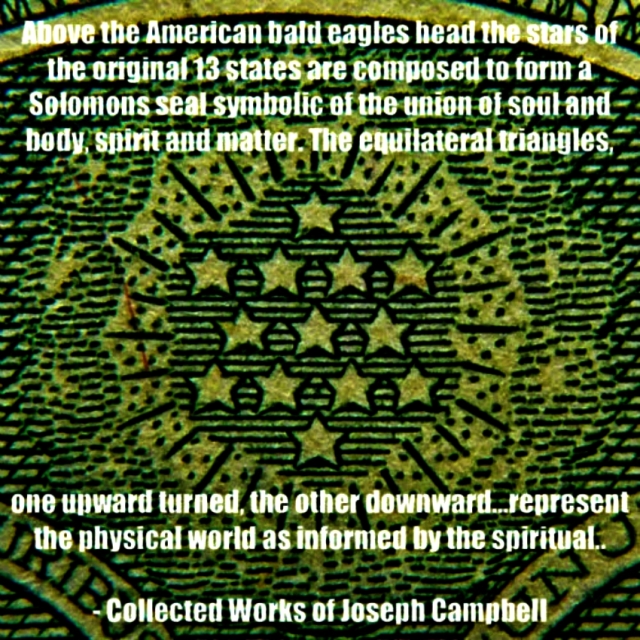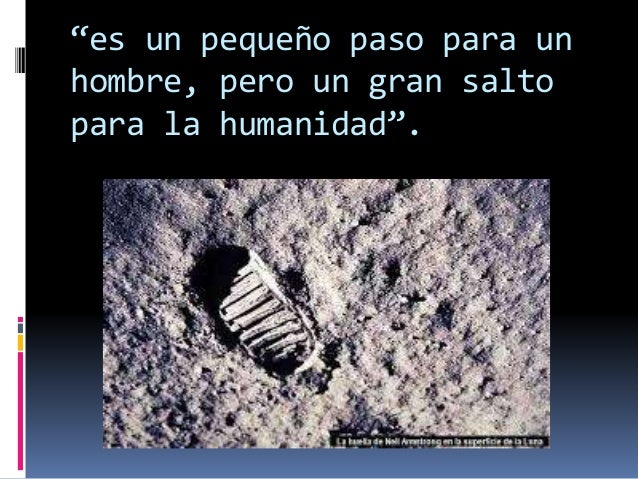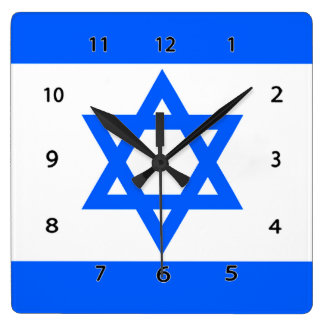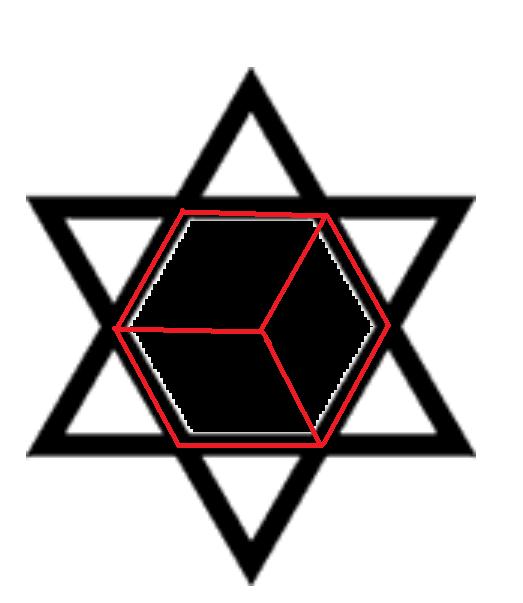|
|
General: APOCALIPSIS 21:3 (33) YHWH MISMO VIENE A REINAR EN LA TIERRA
Elegir otro panel de mensajes |
|
|
Apocalipsis 21
1. Vi un cielo nuevo y una tierra nueva; porque el primer cielo y la primera tierra pasaron, y el mar ya no existía más. (Una referencia al tercer dia de la creacion. Es como una tipologia de Genesis 3, en el contexto al tercer dia)
2. Y yo Juan vi la santa ciudad, la nueva Jerusalén, descender del cielo, de Dios, dispuesta como una esposa ataviada para su marido.
3. Y oí una gran voz del cielo que decía: He aquí el tabernáculo de Dios con los hombres, y él morará con ellos; y ellos serán su pueblo, y Dios mismo estará con ellos como su Dios. (Es clara la referencia de APOCALIPSIS 21 A QUE EL PADRE TAMBIEN VIENE A REINAR EN LA TIERRA)
4. Enjugará Dios toda lágrima de los ojos de ellos; y ya no habrá muerte, ni habrá más llanto, ni clamor, ni dolor; porque las primeras cosas pasaron.
5. Y el que estaba sentado en el trono dijo: He aquí, yo hago nuevas todas las cosas. Y me dijo: Escribe; porque estas palabras son fieles y verdaderas. (Cuando dice alli palabras, esta haciendo referencia no solamente a las palabras especificamente sino que tambien a los 144000 santos y sacerdotes en el contexto a que CRISTO TAMBIEN ES LLAMADO "PALABRA DE DIOS" Y "FIEL Y VERDADERO" EN APOCALIPSIS 19 en su ultima parte)
6. Y me dijo: Hecho está. Yo soy el Alfa y la Omega, el principio y el fin. Al que tuviere sed, yo le daré gratuitamente de la fuente del agua de la vida. (Es claro que el que lo dice ES DIOS EL PADRE YHWH)
7. El que venciere heredará todas las cosas, y yo seré su Dios, y él será mi hijo. (Noten la similitud a JUAN 20, cuando CRISTO LE DICE A MARIA MAGDALENA, TIPO DE LA NUEVA JERUSALEN, VOY A MI PADRE Y VUESTRO PADRE A MI DIOS Y A VUESTRO DIOS. Es obvio el cumplimiento del PACTO ABRAHAMICO Y EL PACTO DAVIDICO DEL REINO MESIANICO DE 2 DE SAMUEL 7)
8. Pero los cobardes e incrédulos, los abominables y homicidas, los fornicarios y hechiceros, los idólatras y todos los mentirosos tendrán su parte en el lago que arde con fuego y azufre, que es la muerte segunda.
9. Vino entonces a mí uno de los siete ángeles que tenían las siete copas llenas de las siete plagas postreras, y habló conmigo, diciendo: Ven acá, yo te mostraré la desposada, la esposa del Cordero. (Noten la relacion de la COPA CON LA ESPOSA DEL CORDERO)
10. Y me llevó en el Espíritu a un monte grande y alto, y me mostró la gran ciudad santa de Jerusalén, que descendía del cielo, de Dios,
MON-KEY/MON-DAY/MON-EY-E/LLAVE DEL MONO/MOON /LUNA/ RAQUEL (GENESIS 37)
11. teniendo la gloria de Dios. Y su fulgor era semejante al de una piedra preciosísima, como piedra de jaspe, diáfana como el cristal. (LA "GLORIA DE DIOS" es una clave sabatica en contexto a EXODO 24 Y 25. Se vuelve a repetir el patron del libro de EFESO EN SU CAPITULO 5.)
12. Tenía un muro grande y alto con doce puertas; y en las puertas, doce ángeles, y nombres inscritos, que son los de las doce tribus de los hijos de Israel;
13. al oriente tres puertas; al norte tres puertas; al sur tres puertas; al occidente tres puertas.
14. Y el muro de la ciudad tenía doce cimientos, y sobre ellos los doce nombres de los doce apóstoles del Cordero.
15. El que hablaba conmigo tenía una caña de medir, de oro, para medir la ciudad, sus puertas y su muro.
16. La ciudad se halla establecida en cuadro, y su longitud es igual a su anchura; y él midió la ciudad con la caña, doce mil estadios; la longitud, la altura y la anchura de ella son iguales. (LA CUBICACION DE UNA ESFERA. HAY UN OBVIO NEXO ALQUIMICO. LA GRAN CIUDAD ESTA DISEÑADA CON EL MISMO PATRON DE LA GRAN PIRAMIDE DE GIZE)
17. Y midió su muro, ciento cuarenta y cuatro codos, de medida de hombre, la cual es de ángel.
18. El material de su muro era de jaspe; pero la ciudad era de oro puro, semejante al vidrio limpio;
19. y los cimientos del muro de la ciudad estaban adornados con toda piedra preciosa. El primer cimiento era jaspe; el segundo, zafiro; el tercero, ágata; el cuarto, esmeralda;
20. el quinto, ónice; el sexto, cornalina; el séptimo, crisólito; el octavo, berilo; el noveno, topacio; el décimo, crisopraso; el undécimo, jacinto; el duodécimo, amatista.
21. Las doce puertas eran doce perlas; cada una de las puertas era una perla. Y la calle de la ciudad era de oro puro, transparente como vidrio.
22. Y no vi en ella templo; porque el Señor Dios Todopoderoso es el templo de ella, y el Cordero.
23. La ciudad no tiene necesidad de sol ni de luna que brillen en ella; porque la gloria de Dios la ilumina, y el Cordero es su lumbrera. (Es como que hay una referencia esoterica a SOL-O-MON, OSEA JUAN 10:22)
24. Y las naciones que hubieren sido salvas andarán a la luz de ella; y los reyes de la tierra traerán su gloria y honor a ella.
25. Sus puertas nunca serán cerradas de día, pues allí no habrá noche.
26. Y llevarán la gloria y la honra de las naciones a ella.
27. No entrará en ella ninguna cosa inmunda, o que hace abominación y mentira, sino solamente los que están inscritos en el libro de la vida del Cordero.
|
|
|
|
|
EL PADRE ES DIOS DEL UNIVERSO, NO ES REY DE REYES.
NABUCODONOSOR TAMBIEN ERA REY DE REYES O NO LEYO EL LIBRO DE DANIEL.
¿PORQUE LE MOLESTA EL TODOPODEROSO? |
|
|
|
|
1. Esdras 7:12: Artajerjes REY DE REYES, a Esdras, sacerdote y escriba erudito en la ley del Dios del cielo: Paz.
2. Ezequiel 26:7: Porque así ha dicho Jehová el Señor: He aquí que del norte traigo yo contra Tiro a Nabucodonosor rey de Babilonia, REY DE REYES, con caballos y carros y jinetes, y tropas y mucho pueblo.
3. Daniel 2:37: Tú, oh rey, eres REY DE REYES; porque el Dios del cielo te ha dado reino, poder, fuerza y majestad.
¿ERA DIOS NABUCODONOSOR?
¿ERA DIOS ARTAJERJES? |
|
|
|
|
La gente si conocía su nombre y vió a Nabucodonosor, por tal no me refiero a ese, sino aquel que tenía por nombre, el Verbo de Dios.
Pero a Dios nadie lo ha visto jamás, pero al ver a su Hijo único ves a Dios porque el es la manifestación o imagen perfecta de Dios en la Tierra, con la gloria del Padre.
Si el Verbo de Dios era el jinete del caballo blanco (APO 19), y a la vez el rey de reyes (APO 19), entonces el Cordero quien es Cristo, también era el Verbo de Dios (APO 17), y por tal era Dios (JUAN 1) |
|
|
|
|
Y DALE CON EL VERBO, ya sabe usted que ESA TRADUCCION ES FALSA PERO SIGUE CON LO MISMO. LA VERDADERA TRADUCCION ES PALABRA, NO VERBO. EL MISMO APOCALIPSIS 21 TAMBIEN LE LLAMA PALABRAS FIELES Y VERDADERAS A LOS 144000.
¿SON DIOSES LOS 144000? ¿PORQUE INCUCE? ¿PORQUE OCULTA AL VERDADERO DIOS? |
|
|
|
|
Apocalipsis 21
1. Vi un cielo nuevo y una tierra nueva; porque el primer cielo y la primera tierra pasaron, y el mar ya no existía más. (Una referencia al tercer dia de la creacion. Es como una tipologia de Genesis 3, en el contexto al tercer dia)
2. Y yo Juan vi la santa ciudad, la nueva Jerusalén, descender del cielo, de Dios, dispuesta como una esposa ataviada para su marido.
3. Y oí una gran voz del cielo que decía: He aquí el tabernáculo de Dios con los hombres, y él morará con ellos; y ellos serán su pueblo, y Dios mismo estará con ellos como su Dios. (Es clara la referencia de APOCALIPSIS 21 A QUE EL PADRE TAMBIEN VIENE A REINAR EN LA TIERRA)
4. Enjugará Dios toda lágrima de los ojos de ellos; y ya no habrá muerte, ni habrá más llanto, ni clamor, ni dolor; porque las primeras cosas pasaron.
5. Y el que estaba sentado en el trono dijo: He aquí, yo hago nuevas todas las cosas. Y me dijo: Escribe; porque estas palabras son fieles y verdaderas. (Cuando dice alli palabras, esta haciendo referencia no solamente a las palabras especificamente sino que tambien a los 144000 santos y sacerdotes en el contexto a que CRISTO TAMBIEN ES LLAMADO "PALABRA DE DIOS" Y "FIEL Y VERDADERO" EN APOCALIPSIS 19 en su ultima parte)
Apocalipsis 19
1. Después de esto oí una gran voz de gran multitud en el cielo, que decía: ¡Aleluya! Salvación y honra y gloria y poder son del Señor Dios nuestro;
2. porque sus juicios son verdaderos y justos; pues ha juzgado a la gran ramera que ha corrompido a la tierra con su fornicación, y ha vengado la sangre de sus siervos de la mano de ella.
3. Otra vez dijeron: ¡Aleluya! Y el humo de ella sube por los siglos de los siglos.
4. Y los veinticuatro ancianos y los cuatro seres vivientes se postraron en tierra y adoraron a Dios, que estaba sentado en el trono, y decían: ¡Amén! ¡Aleluya!
5. Y salió del trono una voz que decía: Alabad a nuestro Dios todos sus siervos, y los que le teméis, así pequeños como grandes.
6. Y oí como la voz de una gran multitud, como el estruendo de muchas aguas, y como la voz de grandes truenos, que decía: ¡Aleluya, porque el Señor nuestro Dios Todopoderoso reina!
7. Gocémonos y alegrémonos y démosle gloria; porque han llegado las bodas del Cordero, y su esposa se ha preparado.
8. Y a ella se le ha concedido que se vista de lino fino, limpio y resplandeciente; porque el lino fino es las acciones justas de los santos.
9. Y el ángel me dijo: Escribe: Bienaventurados los que son llamados a la cena de las bodas del Cordero. Y me dijo: Estas son palabras verdaderas de Dios.
10. Yo me postré a sus pies para adorarle. Y él me dijo: Mira, no lo hagas; yo soy consiervo tuyo, y de tus hermanos que retienen el testimonio de Jesús. Adora a Dios; porque el testimonio de Jesús es el espíritu de la profecía.
11. Entonces vi el cielo abierto; y he aquí un caballo blanco, y el que lo montaba se llamaba Fiel y Verdadero, y con justicia juzga y pelea.
12. Sus ojos eran como llama de fuego, y había en su cabeza muchas diademas; y tenía un nombre escrito que ninguno conocía sino él mismo.
13. Estaba vestido de una ropa teñida en sangre; y su nombre es: LA PALABRA DE DIOS.
14. Y los ejércitos celestiales, vestidos de lino finísimo, blanco y limpio, le seguían en caballos blancos.
15. De su boca sale una espada aguda, para herir con ella a las naciones, y él las regirá con vara de hierro; y él pisa el lagar del vino del furor y de la ira del Dios Todopoderoso.
16. Y en su vestidura y en su muslo tiene escrito este nombre: REY DE REYES Y SEÑOR DE SEÑORES.
17. Y vi a un ángel que estaba en pie en el sol, y clamó a gran voz, diciendo a todas las aves que vuelan en medio del cielo: Venid, y congregaos a la gran cena de Dios,
18. para que comáis carnes de reyes y de capitanes, y carnes de fuertes, carnes de caballos y de sus jinetes, y carnes de todos, libres y esclavos, pequeños y grandes.
19. Y vi a la bestia, a los reyes de la tierra y a sus ejércitos, reunidos para guerrear contra el que montaba el caballo, y contra su ejército.
20. Y la bestia fue apresada, y con ella el falso profeta que había hecho delante de ella las señales con las cuales había engañado a los que recibieron la marca de la bestia, y habían adorado su imagen. Estos dos fueron lanzados vivos dentro de un lago de fuego que arde con azufre.
21. Y los demás fueron muertos con la espada que salía de la boca del que montaba el caballo, y todas las aves se saciaron de las carnes de ellos.
|
|
|
|
|
Si la palabra que sale de la boca o escrita con la mano, fuera el "logos" (la Palabra) a la que se refiere Juan 1 o Apo 19, entonces desde el comienzo de todo, el A.T. que es la palabra de Dios escrita, tuviera el tiempo de lo primero creado, osea antes de la creación de la Tierra. O bien, fuera Dios un sonido no una Luz.
De Dios se dice que es un Luz intensa, pero no un sonido intenso. Pues diría Juan 1 así:
- En el principio era el Sonido, y el Sonido estaba con Dios, y el Sonido era Dios.
- En el principio era la Escritura, y la Escritura estaba con Dios, y la Escritura era Dios.
!Por favor!
Todo lo que crees por poner tu fe en autores y autores de internet y google. |
|
|
|
|
ES TANTO EL EGO, DEL SEÑOR SERVIDOR, QUE NECESITA ADORAR AL SEXO MASCULINO.
EL EGO ES EL QUE LE LLEVA A TENER EL ESPIRITU NAZI Y MISOGINO DE ADORAR AL SEXO MASCULINO.
TODO ESO ES EGO. EL NAZI QUE TIENE SERVIDOR ADENTRO, NO LE DEJA VER LA LUZ. |
|
|
|
|
Apocalipsis 21
1. Vi un cielo nuevo y una tierra nueva; porque el primer cielo y la primera tierra pasaron, y el mar ya no existía más. (Una referencia al tercer dia de la creacion. Es como una tipologia de Genesis 3, en el contexto al tercer dia)
2. Y yo Juan vi la santa ciudad, la nueva Jerusalén, descender del cielo, de Dios, dispuesta como una esposa ataviada para su marido. (JUAN SEA JUAN EL EVANGELISTA O SEA EL MISMO JUAN MARCOS, EL MENSAJE ESOTERICO ES CLARISIMO, OSEA UNA REFERENCIA AL SANTO GRIAL, OSEA JUAN MARCOS, EL LINAJE DE CRISTO Y MARIA MAGDALENA. ESTE ES OTRO NEXO DE JUAN MARCOS, OSEA LA CASA DEL APOSENTO ALTO, ADONDE FUE EL CENACULO EN EL MISMO JERUSALEN)
3. Y oí una gran voz del cielo que decía: He aquí el tabernáculo de Dios con los hombres, y él morará con ellos; y ellos serán su pueblo, y Dios mismo estará con ellos como su Dios.
4. Enjugará Dios toda lágrima de los ojos de ellos; y ya no habrá muerte, ni habrá más llanto, ni clamor, ni dolor; porque las primeras cosas pasaron.
5. Y el que estaba sentado en el trono dijo: He aquí, yo hago nuevas todas las cosas. Y me dijo: Escribe; porque estas palabras son fieles y verdaderas.
6. Y me dijo: Hecho está. Yo soy el Alfa y la Omega, el principio y el fin. Al que tuviere sed, yo le daré gratuitamente de la fuente del agua de la vida.
(EL SALMO 119, ESTA ESCRITO EN FUNCION A LAS 22 LETRAS HEBREAS. OSEA QUE EN UN CONTEXTO GRIEGO LA REFERENCIA AL ALFA Y EL OMEGA, ES EN EL CONTEXTO A LAS 22 LETRAS HEBREAS. EL DISEÑO DE LA TORRE EIFFEL EN FUNCION A DICHO SALMO, ES UNA REFERENCIA AL REGOCIJO EN LA TORA, OSEA EL OCTAVO DIA DE LA FIESTA DE LOS TABERNACULOS, LEVITICO 23:33, EN EL CUAL LOS JUDIOS LEEN EL SALMO 119.)
7. El que venciere heredará todas las cosas, y yo seré su Dios, y él será mi hijo. (Noten la similitud a JUAN 20, cuando CRISTO LE DICE A MARIA MAGDALENA, TIPO DE LA NUEVA JERUSALEN, VOY A MI PADRE Y VUESTRO PADRE A MI DIOS Y A VUESTRO DIOS. Es obvio el cumplimiento del PACTO ABRAHAMICO Y EL PACTO DAVIDICO DEL REINO MESIANICO DE 2 DE SAMUEL 7)
8. Pero los cobardes e incrédulos, los abominables y homicidas, los fornicarios y hechiceros, los idólatras y todos los mentirosos tendrán su parte en el lago que arde con fuego y azufre, que es la muerte segunda.
9. Vino entonces a mí uno de los siete ángeles que tenían las siete copas llenas de las siete plagas postreras, y habló conmigo, diciendo: Ven acá, yo te mostraré la desposada, la esposa del Cordero. (Noten la relacion de la COPA CON LA ESPOSA DEL CORDERO)
10. Y me llevó en el Espíritu a un monte grande y alto, y me mostró la gran ciudad santa de Jerusalén, que descendía del cielo, de Dios,
11. teniendo la gloria de Dios. Y su fulgor era semejante al de una piedra preciosísima, como piedra de jaspe, diáfana como el cristal. (LA "GLORIA DE DIOS" es una clave sabatica en contexto a EXODO 24 Y 25. Se vuelve a repetir el patron del libro de EFESO EN SU CAPITULO 5.)
12. Tenía un muro grande y alto con doce puertas; y en las puertas, doce ángeles, y nombres inscritos, que son los de las doce tribus de los hijos de Israel;
13. al oriente tres puertas; al norte tres puertas; al sur tres puertas; al occidente tres puertas.
14. Y el muro de la ciudad tenía doce cimientos, y sobre ellos los doce nombres de los doce apóstoles del Cordero.
GNOSIS=STAR GATE
NOSI=SION
ALSION (UBICADA A 33 GRADOS DESDE O DE ARIES)
ESTRELLA DE DAVID ES LA ALQUIMIA, OSEA LA UNION ENTRE EL HOMBRE Y LA MUJER
NOTEN LA ESTRELLA DE 5 PUNTAS EN EL CENTRO DEL EXAGONO CENTRO DE LA ESTRELLA DE 6 PUNTAS
EL EXAGONO TAMBIEN ES UNA REFERENCIA AL CUBO.
NOTEN QUE EN ESTA ESTRELLA DE 6 PUNTAS HAY 13 TRIANGULOS DE 5 PUNTAS, OSEA QUE NOS DA UN NEXO CON LAS 12 CONSTELACIONES DEL ZODIACO, CON LAS 12 HORAS DEL DIA, CON LAS 12 LUNAS QUE HAY EN EL CALENDARIO, CON LA SANTA CENA EN EL CONTEXTO A LOS 12 APOSTOLES, CON LAS 12 TRIBUS DE ISRAEL, CON EL MERIDIANO DE GREENWICH E INCLUSO CON ROSE LINE, ETC,ETC. TODO TIENE COMO PATRON LA ESTRELLA DE 6 PUNTAS, OSEA LA UNION ENTRE EL HOMBRE Y LA MUJER QUE LA TRADICION RELIGIOSA "OLVIDO". ESTE ES EL PATRON ESOTERICO DETRAS DE APOCALIPSIS 22 EN SU RELACION CON VENUS.
Observen una estrella de 6 puntas=6to dia=sex=six=VENUS/VIERNES (SEXTO DIA DE LA SEMANA)
OBSERVEN QUE TAMBIEN ES UN CUBO
6,7 Y 8
15. El que hablaba conmigo tenía una caña de medir, de oro, para medir la ciudad, sus puertas y su muro.
16. La ciudad se halla establecida en cuadro, y su longitud es igual a su anchura; y él midió la ciudad con la caña, doce mil estadios; la longitud, la altura y la anchura de ella son iguales. (LA CUBICACION DE UNA ESFERA. HAY UN OBVIO NEXO ALQUIMICO. LA GRAN CIUDAD ESTA DISEÑADA CON EL MISMO PATRON DE LA GRAN PIRAMIDE DE GIZE)

Figura 16. La relación geométrica entre el codo real y el metro.
LA CLAVE MATEMATICA ESTA EN LA ECUACION:
PI-(PHI ELEVADO AL CUADRADO)=CODO REAL
 |
|
3.1416 - 2.61800 = 0.5236
|
3.1416-2.618=0.5236
CODO REAL=.5236
ESTE ES EL SECRETO DEL NEXO "ROSE LINE", EN EL CONTEXTO AL METRO Y EN EL CONTEXTO A LA PIRAMIDE DE LOUVRE.
17. Y midió su muro, ciento cuarenta y cuatro codos, de medida de hombre, la cual es de ángel.
21. Las doce puertas eran doce perlas; cada una de las puertas era una perla. Y la calle de la ciudad era de oro puro, transparente como vidrio.
22. Y no vi en ella templo; porque el Señor Dios Todopoderoso es el templo de ella, y el Cordero.
23. La ciudad no tiene necesidad de sol ni de luna que brillen en ella; porque la gloria de Dios la ilumina, y el Cordero es su lumbrera. (Es como que hay una referencia esoterica a SOL-O-MON, OSEA JUAN 10:22)
|
|
|
|
|
◄ Benjamin Gate (Jerusalem) ►
|
Atlas

Benjamin Gate (Jerusalem) and surrounding area
Maps Created using Biblemapper 3.0
Additional data from OpenBible.info
You are free to use up to 50 Biblos coprighted maps (small or large) for your website or presentation. Please credit Biblos.com.
Occurrences
Jeremiah 20:2 Then Pashhur struck Jeremiah the prophet, and put him in the stocks that were in the upper gate of Benjamin, which was in the house of Yahweh.
Jeremiah 37:13 When he was in the gate of Benjamin, a captain of the guard was there, whose name was Irijah, the son of Shelemiah, the son of Hananiah; and he laid hold on Jeremiah the prophet, saying, You are falling away to the Chaldeans.
Jeremiah 38:7 Now when Ebedmelech the Ethiopian, a eunuch, who was in the king's house, heard that they had put Jeremiah in the dungeon (the king then sitting in the gate of Benjamin),
Encyclopedia
JERUSALEM
je-roo'-sa-lem:
I. THE NAME
1. In Cuneiform
2. In Hebrew
3. In Greek and Latin
4. The Meaning of Jerusalem
5. Other Names
II. GEOLOGY, CLIMATE AND SPRINGS
1. Geology
2. Climate and Rainfall
3. The Natural Springs
III. THE NATURAL SITE
1. The Mountains Around
2. The Valleys
3. The Hills
IV. GENERAL TOPOGRAPHY OF JERUSALEM
1. Description of Josephus
2. Summary of the Names of the Five Hills
3. The Akra
4. The Lower City
5. City of David and Zion
V. EXCAVATIONS AND ANTIQUITIES
1. Robinson
2. Wilson, and the Palestine Exploration Fund (1865)
3. Warren and Conder
4. Maudslay
5. Schick
6. Clermont-Ganneau
7. Bliss and Dickie
8. Jerusalem Archaeological Societies
VI. THE CITY'S WALLS AND GATES
1. The Existing Walls
2. Wilson's Theory
3. The Existing Gates
4. Buried Remains of Earlier Walls
5. The Great Dam of the Tyropoeon
6. Ruins of Ancient Gates
7. Josephus' Description of the Walls
8. First Wall
9. Second Wall
10. Third Wall
11. Date of Second Wall
12. Nehemiah's Account of the Walls
13. Valley Gate
14. Dung Gate
15. Fountain Gate
16. Water Gate
17. Horse Gate
18. Sheep Gate
19. Fish Gate
20. The "Old Gate"
21. Gate of Ephraim
22. Tower of the Furnaces
23. The Gate of Benjamin
24. Upper Gate of the Temple
25. The Earlier Walls
VII. ANTIQUARIAN REMAINS CONNECTED WITH THE WATER SUPPLY
1. Gihon: The Natural Spring
2. The Aqueduct of the Canaanites
3. Warren's Shaft
4. Hezekiah's "Siloam" Aqueduct
5. Other Aqueducts at Gihon
|
|
|
|
|
|
¿PORQUE DAN BROWN ES DE LOS ESTADOS UNIDOS ? ¿PORQUE EL CODIGO DA VINCI SE ESTRENO EN EL 227=22/7=3:14 ANIVERSARIO DE LA INDEPENDENCIA DE LOS ESTADOS UNIDOS?
NUEVA JERUSALEN
NUEVA/NUEVE/NUEVE MESES LUNARES TIENE CONNOTACION CON UN BEBE
NUEVA/NU-EVA / EVA
ES OBVIA EL NEXO CON UN UNA MADRE Y UN NIÑO
LO QUE ES IMPRESIONANTE QUE SI A LOS 12000 ESTADIOS EQUIVALEN A 2220 KM, OSEA UN NEXO KAVALITICO CON 1776=222X8, OSEA CON LA INDEPENDENCIA DE LOS ESTADOS UNIDOS.
ES MONSTRUOSO TODA LA MATEMATICAS QUE HAY DETRAS DE LA NUEVA JERUSALEN, EN EL CONTEXTO A LA GRAN PIRAMIDE DE GIZE, DISEÑADA EN CONTEXTO AL NUMERO PI Y EL NUMERO PHI, PATRONES MATEMATICO DE LA INDEPENDENCIA DE LOS ESTADOS UNIDOS.
EL NEXO ROSE LINE, EN EL CONTEXTO AL METRO TIENE ESTA REFERENCIA MATEMATICA.
|
|
|
|
|
 Wednesday, April 15, 2009 Wednesday, April 15, 2009
Let us assume (and these are reasonable assumptions as we will further explain) these things:
1) that Salome, the mother of John and James, the sons of Zebedee, was the Virgin Mary’s sister — an assumption reached by comparing three verses: Mark 15:40 and Matthew 20:20; 27:56.
2) that John and James, the sons of Zebedee, were not given the names “sons of thunder” to flatter them; but rather because they were hot-tempered (and therefore unlovable) and always jockeying for special favor with Jesus, presumably their cousin by virtue of Mary being Salome’s sister. Indeed, the other disciples are often shown grumbling that John and James persist in asking Jesus if they will find special favor in the world to come.
3) that the apostle John, the son of Zebedee, who is one of two candidates for the writer of the Gospel of John, which by default makes him one of two candidates for the scholarly third-person identifier “the disciple whom Jesus loved,” was a fisherman’s son from Galilee and not a scholar who lived in Jerusalem and knew the high priests Annas and Caiaphas.
4) that Mary Magdalene does not deserve to be identified as “the disciple whom Jesus loved” by virtue of the fact that she is not a man named John, who would have written the Gospel of John, and by virtue of the fact that she is seen in the company of “the other disciple, the one whom Jesus loved” at the empty tomb with Peter.
5) that the home of John Mark and his mother Mary served as the home where the actual last supper took place — and, that this home was located near the Garden of Gethsemane, to which Jesus and Peter, James and John journey immediately following the last supper.
6) that when John and James flee the Garden of Gethsemane upon seeing Judas and the Roman soldiers arrive that they do not later become emboldened and proceed to Golgotha to witness the crucifixion of Jesus.
7) that John Mark of Cyrene knew Simon of Cyrene (as indicated by Mark’s naming of his two sons Rufus and Alexander), who helped to carry Jesus’ cross.
8) that the Virgin Mary would not have wanted to witness the torturous execution of her son Jesus.
9) that John Mark was a scholar, having been trained in Cyrene in north Africa to read and write classical Greek, Latin and Hebrew.
10) that John Mark wrote the Gospel of Mark.
11) that John Mark is the only man named John to be placed near Ephesus, according to a letter written by Paul to Timothy, who at the time was in Ephesus, near Patmos, where the book of the Revelation of Jesus was written by a man named John.
12) that the controversy of which man named John is the writer of the Gospel of John and therefore “the beloved disciple” has been a topic for debate even among laymen since the third century.
13) that Leonardo da Vinci, having had three years to paint The Last Supper (from 1495 to 1498), did not mistakenly leave in his painting a hand holding a dagger without an arm or person attached behind the back of Judas — something which the Da Vinci Code never addresses.
None of these are in any way outrageous assumptions, but quite plausible and already readily accepted by most Bible scholars. If we assume all of these things … we can go through the following vague references to a man named John and a woman named Mary and end up with the identity of the true beloved disciple, the writer of the Gospel of John.
Now let us turn our attention to 19 vague references to people which appear in the gospels of Mark and John. We believe that taking into account these first 12 assumptions above that we can demonstrate that all but two of these references are references to African scholar John Mark. We contend that two of the 19 references are made to John Mark’s mother Mary.
1) “A certain youth” is found in Mark 14:51-52. — These verses along with John 19:25-27 are KEYSTONE verses, in that they are the two passages from the gospels of Mark and John which indicate tampering with the original gospel manuscripts. This Mark passage sticks out like the proverbial sore thumb, because without identifying the “certain youth” and what he was doing in the vicinity of the Garden of Gethsamene it very obviously has nothing to do with the narrative. That is a clue that the original passage was altered by someone who wished to obscure John Mark, whom scholars tend to believe was the “certain youth” anyway.
These unspecific verses about a seemingly unrelated event on the night that Jesus was arrested serve as the keystone upon which all of the vague references in John’s Gospel must be overlaid and considered.
2) “The disciple whom Jesus loved” is found in John 13:23. — This we know is a man named John.
Jesus thought enough of the beloved disciple — and Peter knew it — that Peter should be compelled to nudge John — “the disciple whom Jesus loved” — and ask him to ask Jesus who it would be who would betray Jesus. John had a special relationship with Jesus, which went beyond being a mere disciple. That’s an important point. It is the closeness of the relationship between John and Jesus that has precipitated the use of the vague and obscuring language; in other words, as we shall see the vaguely identified John in subsequent passages, whom we say is John Mark, became necessary to the alterer of the original manuscripts if the alterer was to be successful. Of all of the references to the person who serves as Jesus’ defender, which we shall see next, we would expect these references to be clear, i.e., we would expect the disciple to be named, and he is not.
Peter, as close as he was to Jesus, felt compelled to ask John to ask Jesus who was going to betray Jesus. John clearly had a familial relationship with Jesus — they were that close. It had to be a unique and very special relationship, one based on mutual trust and understanding, how a home boy would feel toward another.
3) “Another disciple” is found in John 18:15. — This is a man who is a scholar, scribe and likely a priest, having been known to the high priests Caiaphas and Annas.
4) “This disciple” is found in John 18:15. — This is a man who is a scholar, scribe and likely a priest.
5) “This other disciple” is found once in John 18:16. — This is a man who is a scholar, scribe and likely a priest.
Why would the person who was willing to go to bat for Jesus be unnamed? Surely this man, whom we say is scholar John Mark, was not just a casual acquaintance of the high priests Caiaphas and Annas. They must have trusted him, otherwise he doesn’t get an audience. And we would have to say that John Mark may have come very close to winning Jesus’ freedom because of what they thought of John Mark. This John (John Mark) lived and worked in Jerusalem. Zebedee’s John was a fisherman from Galilee, as Peter was. If Peter would deny Jesus repeatedly … why would Zebedee’s John do any differently? In fact, Zebedee’s John was nowhere to be found, having fled with his brother James.
Clearly, the unnamed disciple was a special person. But apparently not special enough to be named. Was the unnamed disciple’s name removed? In other words, was John Mark’s name ever used, was it used in the original manuscript? We will probably never know, but a name doesn’t appear here, and it is jarring. Mark 14:51-52 is the keystone: this person is a youth, younger than the other disciples, which John Mark was; the name has apparently been removed in these verses, rendering them nonsensical, irrelevant; then why does this passage appear at all if it seemingly has no bearing on the story? These verses appear as subterfuge: Because if John Mark is not wearing his priestly white linen garment … then he cannot be “the other disciple” who serves as Jesus’ defense counsel. Only a scribe, i.e., attorney could have argued effectively on Jesus’ behalf. John Mark was a scribe. From the second century B.C.E. forward … all Jewish scribes were also priests. So the white linen makes sense. It is the hidden John Mark who is the only person who could play this role. He is the thirteenth disciple.
6) “The other disciple, the one Jesus loved” is found in John 20:2. — This person is with Peter at the empty tomb. This person outruns Peter to the empty tomb. This person is not Mary Magdalene.
This is a very critical reference to the unnamed disciple, because Mary Magdalene is in the same scene with this person, i.e., “the other disciple, the one Jesus loved” — therefore removing any likelihood that Mary Magdalene was herself the beloved disciple. This is a critical passage also because it describes “the other disciple” as outrunning Peter to the empty tomb, something a younger man would be expected to do. But when John Mark got to the empty tomb … he did not go in. He was frightened. That would change. John would become bold and take a second name, a Greek name, Marcus, which some have tried to say means “deformed fingers”; it means “Hammer,” which is a testament to John Mark’s newfound boldness after seeing his friend crucified. John Mark must have been hated, and so he has been obscured.
7) “The other disciple” is found in John 20:3. — This is the same person as the one above.
8) “The other disciple” is found in John 20:4. — Ditto.
9) “The other disciple” is found in John 20:8. — Ditto.
10) “The disciples” is found in John 20:10. — This is Peter and the other disciple above.
11) “Two other disciples” found in John 21:2. — It is uncertain who these two disciples are; but we know they are not the sons of Zebedee, John and James, who are previously named in the same sentence.
This is a critical reference, too — for it distinguishes two unnamed disciples from the two sons of Zebedee, John and James. A pattern by this point has been established: wherever John Mark appears … there are only vague references. “The other disciple” could not have been Zebedee’s John in any of these other instances, so we assume based on previous assumptions that this must be John Mark … and one other person. The second disciple may have been added to confuse us.
12) “The disciple whom Jesus loved” is found in 21:7. — This is the writer of the Gospel of John.
This reference is made in the way that a scholar would use such a reference to identify himself, in the third person. I suspect that those who wanted to obscure John Mark took a cue from this sort of reference and the one in chapter thirteen in John’s Gospel, when John Mark as a scholar refers to himself in the third person. Those who tampered with these other verses took advantage of the ambiguity … to obscure the scholar.
13) “The other disciples” is found in John 21:8. — It is uncertain who these other disciples are.
14) “The disciple whom Jesus loved” is found in 21:20. — This is the writer of the Gospel of John.
15) “This disciple” is found in John 21:23. — This is the writer of the Gospel of John, whom Jesus says will likely not die. This person very likely lives to write the book of the Revelation of Jesus.
This is Jesus’ reply to Peter, who has asked Jesus if one of the disciples, whom we contend is John Mark, will escape martyrdom: “What is it to you if this disciple is not martyred? You worry about yourself.” This in effect is what Jesus says when Peter wants to know if the rumor is true that “this man,” “this disciple,” according to the grapevine, is not going to be martyred. Peter would have never raised the issue within earshot of Zebedee’s John if this person had been Zebedee’s John. And Jesus would never have played favorites, showing favoritism for Zebedee’s John or James over the other disciples. John and James, the sons of Zebedee, were also the sons of Salome, the sister of Jesus’ mother Mary, making John and James Jesus’ cousins. What cousin is beloved? What cousin is chosen over another cousin and called beloved?
16) “This disciple who testifies to these things” is found in John 21:24. — This person is the writer of the Gospel of John.
Here again, John Mark refers to himself in the third person as a scholar would do. Only John Mark is a scholar. I don’t know why other Bible scholars have not consulted the Coptic biography of John Mark written by Pope Shenouda III, the patriarch of the Holy See of St. Mark, but they haven’t (it appears in our “sky links” above under “Biography of St. Mark,” conveniently enough. New Testament commentaries which I have read pertaining to John Mark doubt that he was even the founder of the Coptic church in Alexandria, Egypt. The Coptic biography of John Mark is unequivocal in stating all that John Mark was, and he was a considerable force of early Christianity. The only thing the Copts get wrong has to do with the alleged martyrdom of John Mark, which cannot have occurred. For he lived on to write Revelation. Zebedee’s John, on the other hand, was expecting martyrdom … because Jesus told him and James that they would drink from the same cup as Jesus.
17) “The other Mary” is found in Matthew 28:1. — It is uncertain who this woman is, but note that she is described in the same way as “the other disciple.”
This Mary can be one of many other women named Mary, and there is a passel of them — which is why we should expect a more precise description of just which Mary this is. But it is a vague reference to this Mary, who, very notably, is in the presence of Mary Magdalene, who is already suspect certainly, not being the beloved disciple — and she is not because John Mark, the other disciple who is with her at the empty tomb, is. It is reasonable to assume that Mary, John Mark’s mother, would also be treated obscurely if any woman named Mary would be … for this John and Mary are the actual mother and son who appear at the foot of Jesus’ cross in John 19:25-27.
18) “The other Mary” is found in Matthew 28:61. — Ditto.
When these verses are cross-referenced, laid one on top of the other, with an understanding of motivations and John Mark’s actual background, national and educational, we come out at the distilled end with only one person who fits the criteria in all of these verses. And that is John Mark. It can be no one else. Bible scholars for years have avoided even weighing in on this subject, because it appeared unsolvable.
19) “The disciple whom Jesus loved” and Mary, the mother of Jesus” is found in John 19:25-27.
This famous passage reads as follows: “When Jesus saw his mother there, and the disciple whom he loved standing nearby, he said to his mother, ‘Woman, behold your son,’ and to the disciple, ‘Behold your mother.’ From that hour, this disciple took her into his home.”
Let’s assume the beloved disciple in this instance is John, the son of Zebedee, who fled Gethsemane earlier, abandoning Jesus. In Matthew 13:54-57, we’re presented with the strongest evidence as to why this famous passage in John as it is presently written doesn’t ring true. It reads: “Coming to his hometown, he began teaching the people in their synagogue, and they were amazed. “Where did this man get this wisdom and these miraculous powers?” they asked. “Isn’t this the carpenter’s son? Isn’t his mother’s name Mary, and aren’t his brothers James, Joseph, Simon and Judas? Aren’t all his sisters with us? Where then did this man get all these things?” And they took offense at him. But Jesus said to them, “Only in his hometown and in his own house is a prophet without honor.”
Why would Jesus ask Zebedee’s John, a hot-tempered firebrand against whom the other disciples often grumbled, to take care of his mother Mary, when we know from this passage in Matthew that Jesus had at least four brothers, one of whom being James, who became the head of the church in Jerusalem, and sisters as well? This passage in John is even further made questionable by the possibility that the Virgin Mary was likely the aunt of the apostle John, as we have said, with Mary being the sister of Salome, whose sons were James and John, the sons of Zebedee.
Besides, as we have already stated … once Judas and the Roman soldiers arrive in Gethsemane, James and John, the sons of Zebedee, run for their lives, presumably not to be seen again until the book of Acts, when we learn that James, alas, is martyred, just as Jesus predicted. But what of John? James and John were inseparable. It is highly doubtful that James and John, having been told earlier by Jesus that they would be martyred … it is highly doubtful that they would have suddenly become bold enough to ascend Golgotha and watch Jesus as he was executed. Neither would Peter have been bold enough to ascend to Golgotha. And then of course there is the inescapable fact that John Mark is placed atop Golgotha, having followed as an eye-witness Jesus and Simon of Cyrene (very apparently known to John Mark of Cyrene), who would carry Jesus’ cross.
If the disciple whom Jesus loved in this instance was Zebedee’s John, this passage is odd. It makes sense if John Mark, who is already present at Golgotha, is the disciple whom Jesus loved. What Jesus then appears to be saying when he tells the two to “behold” one another … is not to perceive one another as mother and son anew … but to look after one another in Jesus’ physical absence. And this John Mark does, leaving Paul on the mission field to go home to Jerusalem, which caused the famous rift between Paul and John Mark. You’ll recall that Barnabas, after this fight, sides with John Mark … and they leave for Cyprus. Barnabas was the nephew of Mary, the mother of John Mark. And so Barnabas, too, may well have been an African. We also know that he was wealthy, as John Mark and his mother Mary apparently were.
Let us recap what we’ve said here: This passage, then, along with Mark 14:51-52, is a keystone passage, because it has apparently been tampered with, changing the person Mary, the mother of John Mark, to Mary, the mother of Jesus. John Mark and Mary were Jesus’ benefactors: wealthy Africans and unsung heroes of early Christianity. It is hard to imagine that Jesus’ mother would have wanted to be anywhere near Golgotha to see her son tortured and killed. And, as for John the apostle, he could not possibly be here, neither he nor his James, for they fled and abandoned Jesus in the Garden of Gethsemane; nor is Peter here, he having denied even knowing Jesus. John Mark, as evidenced in Mark 15:21, is the only man named John to be present at Golgotha. And we know this because John Mark in the Gospel of Mark describes Simon of Cyrene, whom John Mark would have known along with Simon’s two sons Rufus and Alexander, because John Mark was himself from Cyrene. Only John Mark witnesses the selection of Simon and accompanies Simon and Jesus to the top of Golgotha.
Granted, we are making some pretty large assumptions here. But we’re being realistic when we say that John Mark was at the cross and Zebedee’s John along with Peter and James very likely were not. The passage makes sense if it is John Mark with his actual mother Mary.
Notably (and interestingly) John Mark is placed at Jesus’ cross despite the statements of Papias that John Mark “neither heard nor accompanied Jesus,” these beliefs of Papias coming on the word of a mysterious man named John, apparently known as Presbyter John.
This explanation makes an odd verse suddenly make sense. Jesus told actual mother and son to “behold” or look out for one another in his physical absence. It is of course possible that John Mark may have been standing with Mary, the mother of Jesus, but if Mary, the mother of Jesus, was John Mark’s aunt … it would make this verse odd. We have to assume that John the apostle never took Jesus’ mother to his home in Galilee to care for her, and so the Virgin Mary would never had gone to Ephesus, as Mary Magdalene is alleged to have done, where both are believed to have lived, died and been buried.
A German nun in 1951 initiated the apparently false rumor that the Virgin Mary lived in Ephesus with John, the son of Zebedee, and died there. But, of course, we have the tomb of the Virgin Mary in Jerusalem to refute that.
It bears noting that if this pair was John the apostle and Mary, the mother of Jesus, verse 27, which indicates they left for the beloved disciple’s home at “that very hour,” would suggest that it would have been very unlikely for John, who lived in Galilee, sixty miles to the north, to make the return trip to Jerusalem to be present at the empty tomb — which offers more validation that our interpretation of these verses is accurate.
FINAL NOTE: The Last Supper, as the painted is interpreted by the Da Vinci Code, we contend perpetrates a lie about the true beloved disciple, John Mark, who actually lived in the home where the actual last supper was held. Recognizing this and recognizing that the patron of The Last Supper was Ludovico Sfroza, a.k.a. “the Moor,” whose “justice,” Leonardo said, “was as black as he himself,” it is at least possible that Ludovico may have known about the biblical controversy over which man named John was the beloved disciple, and that one of them was an African. And we say this because in the painting where there should be a man named John being nudged by Peter there is a woman, whom the Da Vinci Code says is Mary Magdalene. She could be anyone. But is she John? No, we don’t think so, and that is because of the presence of the hand behind Judas’ back with no arm or person attached to it. The painting has obviously to our mind been repainted, and it very likely may have been to paint out Ludovico the Moor’s little joke of including John Mark, the hidden thirteenth disciple about whom we know so little. The painting disintegrated within decades after it was painted, being painted presumably on dry plaster, which would seem to be nothing that the master Leonardo would do in creating a fresco. A fresco is only a fresco if it is painted using wet plaster. The French invasion of Milan in 1499, which sent Ludovico and Leonardo packing, would have given anyone who wished to a chance to repaint the fresco, painting out one John or perhaps two, including John Mark, and also repainting Jesus. It is notable that the figure believed to be Mary Magdalene and Jesus himself are of a lighter pigment and style than the rest of the figures in the painting and their expressions, being demure and detached, do not fit the scene. Are The Last Supper then and the Da Vinci Code part of the coverup, which is like the one which appears in the New Testament gospels to obscure John Mark? And who would be responsible for a coverup going as far back possibly as the first century? Papias’ cryptic statement that “the presbyter John” told him that Mark was not a follower or hearer of Jesus … may be a clue.
The presbyter John of Papias’ day in the second century and/or Prester John, a mythical character about whom fanciful stories were told, are suspicious figures, indeed. But are they both fabrications or are they real? They never found Prester John, and, notably stopped looking for him in the seventeenth century reportedly in Ethiopia. Prester John, an Adamic figure, who was supposed to have been a mystical king and priest overseeing a land rich with gold and exotic animals, may have been subterfuge to convince people that there was nothing resembling Eden to be found in Ethiopia, and science today tells us otherwise.
Race is irrelevant, as God is invisible, spirit, indwelling all things. But as we can conclude from the conclusion we reach, race obviously has been the motivation to hide John Mark, but why? Because he was an African and Jesus’ closest friend? You can draw your own conclusions.
http://tanata.squarespace.com/journal/2009/4/15/arguments-for-john-mark-as-the-beloved-disciple.html
|
|
|
|
|
|
Por favor lean todo el capitulo de Ezequiel 16
16:1 Vino a mí palabra de Jehová, diciendo:
16:2 Hijo de hombre, notifica a Jerusalén sus abominaciones,
16:30 ¡Cuán inconstante es tu corazón, dice Jehová el Señor, habiendo hecho todas estas cosas, obras de una ramera desvergonzada,
16:31 edificando tus lugares altos en toda cabeza de camino, y haciendo tus altares en todas las plazas! Y no fuiste semejante a ramera, en que menospreciaste la paga, (EL CENACULO, OSEA LA SANTA CENA, FUE EN EL APOSENTO ALTO EN LA MISMA CIUDAD DE JERUSALEN EN LA CASA DE MARIA LA MADRE DE JUAN MARCOS)
16:32 sino como mujer adúltera, que en lugar de su marido recibe a ajenos.
16:33 A todas las rameras les dan dones; mas tú diste tus dones a todos tus enamorados; y les diste presentes, para que de todas partes se llegasen a ti en tus fornicaciones.
16:34 Y ha sucedido contigo, en tus fornicaciones, lo contrario de las demás mujeres: porque ninguno te ha solicitado para fornicar, y tú das la paga, en lugar de recibirla; por esto has sido diferente.
16:35 Por tanto, ramera, oye palabra de Jehová.
16:36 Así ha dicho Jehová el Señor: Por cuanto han sido descubiertas tus desnudeces en tus fornicaciones, y tu confusión ha sido manifestada a tus enamorados, y a los ídolos de tus abominaciones, y en la sangre de tus hijos, los cuales les diste;
16:37 por tanto, he aquí que yo reuniré a todos tus enamorados con los cuales tomaste placer, y a todos los que amaste, con todos los que aborreciste; y los reuniré alrededor de ti y les descubiriré tu desnudez, y ellos verán toda tu desnudez.
16:38 Y yo te juzgaré por las leyes de las adúlteras, y de las que derraman sangre; y traeré sobre ti sangre de ira y de celos.
16:39 Y te entregaré en manos de ellos; y destruirán tus lugares altos, y derribarán tus altares, y te despojarán de tus ropas, se llevarán tus hermosas alhajas, y te dejarán desnuda y descubierta. (muy similar a Apocalipsis 17:16)
16:40 Y harán subir contra ti muchedumbre de gente, y te apedrearán, y te atravesarán con sus espadas.
16:41 Quemarán tus casas a fuego, y harán en ti juicios en presencia de muchas mujeres; y así haré que dejes de ser ramera, y que ceses de prodigar tus dones.
|
|
|
Ezequiel 16: Infidelidad de Jerusalén
Ezequiel 16:1 Infidelidad de Jerusalén[a] Vino a mí palabra de Jehová, diciendo:
Este mensaje recuerda a Jerusalén acerca de su anterior condición de menosprecio entre las naciones cananeas. Utilizando el lenguaje figurado de una niña pequeña que crece hasta convertirse en una mujer madura, Dios le recuerda que la levantó desde un nivel muy bajo a una gran gloria como su esposa. Sin embargo, traicionó la confianza que
Dios había puesto en ella y se prostituyó entre las naciones paganas adoptando sus costumbres. Si lo dejamos a Dios afuera para cualquier cosa, aun la educación, la familia, la carrera o el placer, lo estamos abandonando de la misma forma.
[private]Ezequiel 16:2 «Hijo de hombre, da a conocer a Jerusalén sus abominaciones,
Ezequiel 16:3 y dile: “Así ha dicho Jehová el Señor sobre Jerusalén: Tu origen, tu nacimiento, es de la tierra de Canaán; tu padre fue un amorreo y tu madre una hetea.[b]
Jerusalén : Simbólicamente designa al reino del sur (o a todo Israel). Tu origen , tu nacimiento : Se refiere a la historia antigua de la ciudad, antes del tiempo de los israelitas, donde Salem aparece como el otro nombre de Jerusalén). El amorreo representaba el elemento semita en Canaán; los heteos no eran semitas. Esto no tiene nada que ver con el origen de los israelitas.
Canaán era el nombre antiguo del territorio tomado por los hijos de Israel. La Biblia a menudo utiliza este nombre para referirse a todas las naciones paganas y corruptas de la región. Los heteos y los amorreos, dos naciones cananeas, eran conocidas por su maldad. Pero ahora Dios dice a su pueblo que no es mejor que los cananeos.
Ezequiel 16:4 Y en cuanto a tu nacimiento, el día que naciste no fue cortado tu cordón umbilical, ni fuiste lavada con aguas para limpiarte ni frotada con sal, ni fuiste envuelta en pañales.
Ni salada con sal : Esta práctica sobrevivió hasta los primeros años del actual siglo. Su propósito era impedir el crecimiento de infecciones.
Ezequiel 16:5 No hubo ojo que se compadeciera de ti para hacerte algo de eso, sintiendo lástima por ti; sino que fuiste arrojada sobre la faz del campo, con menosprecio de tu vida, en el día que naciste.
Fuiste arrojada sobre la faz del campo : Un niño abandonado en un mercado o un área transitada tenía la oportunidad de suscitar misericordia y ser rescatado; pero éste fue lanzado y abandonado para que muriera.
Ezequiel 16:6 »Yo pasé junto a ti y te vi sucia en tus sangres. Y cuando estabas en tus sangres te dije: ‘¡Vive!’. Sí, te dije, cuando estabas en tus sangres: ‘¡Vive!’.
Ezequiel 16:7 Te hice crecer como la hierba del campo; creciste, te hiciste grande y llegaste a ser muy hermosa. Tus pechos se habían formado y tu pelo había crecido, ¡pero estabas desnuda por completo!
Ezequiel 16:8 »Pasé otra vez junto a ti y te miré, y he aquí que tu tiempo era tiempo de amores. Entonces extendí mi manto sobre ti y cubrí tu desnudez; te hice juramento y entré en pacto contigo, dice Jehová, el Señor, y fuiste mía.
Extendí mi manto sobre ti : Similar a la frase de Rut 3:9, «extiende el borde de tu capa sobre tu sierva», una frase que simboliza la unión conyugal.
|
|
HECHOS 12
Hechos
12:1 En aquel mismo tiempo el rey Herodes echó mano a algunos de la iglesia para maltratarles.
12:2 Y mató a espada a Jacobo, hermano de Juan.
12:3 Y viendo que esto había agradado a los judíos, procedió a prender también a Pedro. Eran entonces los días de los panes sin levadura.
12:4 Y habiéndole tomado preso, le puso en la cárcel, entregándole a cuatro grupos de cuatro soldados cada uno, para que le custodiasen; y se proponía sacarle al pueblo después de la pascua.
12:5 Así que Pedro estaba custodiado en la cárcel; pero la iglesia hacía sin cesar oración a Dios por él.
12:6 Y cuando Herodes le iba a sacar, aquella misma noche estaba Pedro durmiendo entre dos soldados, sujeto con dos cadenas, y los guardas delante de la puerta custodiaban la cárcel.
12:7 Y he aquí que se presentó un ángel del Señor, y una luz resplandeció en la cárcel; y tocando a Pedro en el costado, le despertó, diciendo: Levántate pronto. Y las cadenas se le cayeron de las manos.
12:8 Le dijo el ángel: Cíñete, y átate las sandalias. Y lo hizo así. Y le dijo: Envuélvete en tu manto, y sígueme.
12:9 Y saliendo, le seguía; pero no sabía que era verdad lo que hacía el ángel, sino que pensaba que veía una visión.
12:10 Habiendo pasado la primera y la segunda guardia, llegaron a la puerta de hierro que daba a la ciudad, la cual se les abrió por sí misma; y salidos, pasaron una calle, y luego el ángel se apartó de él.
12:11 Entonces Pedro, volviendo en sí, dijo: Ahora entiendo verdaderamente que el Señor ha enviado su ángel, y me ha librado de la mano de Herodes, y de todo lo que el pueblo de los judíos esperaba.
12:12 Y habiendo considerado esto, llegó a casa de María la madre de Juan, el que tenía por sobrenombre Marcos, donde muchos estaban reunidos orando.
12:13 Cuando llamó Pedro a la puerta del patio, salió a escuchar una muchacha llamada Rode,
12:14 la cual, cuando reconoció la voz de Pedro, de gozo no abrió la puerta, sino que corriendo adentro, dio la nueva de que Pedro estaba a la puerta.
1. Marcos 14:15: Y él os mostrará un gran APOSENTO ALTO ya dispuesto; preparad para nosotros allí.
2. Lucas 22:12: Entonces él os mostrará un gran APOSENTO ALTO ya dispuesto; preparad allí.
3. Hechos 1:13: Y entrados, subieron al APOSENTO ALTO, donde moraban Pedro y Jacobo, Juan, Andrés, Felipe, Tomás, Bartolomé, Mateo, Jacobo hijo de Alfeo, Simón el Zelote y Judas hermano de Jacobo.
4. Hechos 20:8: Y había muchas lámparas en el APOSENTO ALTO donde estaban reunidos;
53. Marcos 14:12: El primer día de la fiesta de los panes sin LEVADURA, cuando sacrificaban el cordero de la pascua, sus discípulos le dijeron: ¿Dónde quieres que vayamos a preparar para que comas la pascua?
58. Hechos 12:3: Y viendo que esto había agradado a los judíos, procedió a prender también a Pedro. Eran entonces los días de los panes sin LEVADURA.
59. Hechos 20:6: Y nosotros, pasados los días de los panes sin LEVADURA, navegamos de Filipos, y en cinco días nos reunimos con ellos en Troas, donde nos quedamos siete días.
Sin dudas que hay un nexo de la FIESTA DE LAS LEVADURAS CON EL APOSENTO ALTO Y CON LA CASA DE MARIA LA MADRE DE JUAN MARCOS. Compare justamente con MARCOS 14
MARCOS 14
Marcos
14:1 Dos días después era la pascua, y la fiesta de los panes sin levadura; y buscaban los principales sacerdotes y los escribas cómo prenderle por engaño y matarle.
14:2 Y decían: No durante la fiesta para que no se haga alboroto del pueblo.
14:3 Pero estando él en Betania, en casa de Simón el leproso, y sentado a la mesa, vino una mujer con un vaso de alabastro de perfume de nardo puro de mucho precio; y quebrando el vaso de alabastro, se lo derramó sobre su cabeza.
14:4 Y hubo algunos que se enojaron dentro de sí, y dijeron: ¿Para qué se ha hecho este desperdicio de perfume?
14:5 Porque podía haberse vendido por más de trescientos denarios, y haberse dado a los pobres. Y murmuraban contra ella.
14:6 Pero Jesús dijo: Dejadla, ¿por qué la molestáis? Buena obra me ha hecho.
14:7 Siempre tendréis a los pobres con vosotros, y cuando queráis les podréis hacer bien; pero a mí no siempre me tendréis.
14:8 Esta ha hecho lo que podía; porque se ha anticipado a ungir mi cuerpo para la sepultura.
14:9 De cierto os digo que dondequiera que se predique este evangelio, en todo el mundo, también se contará lo que ésta ha hecho, para memoria de ella.
14:10 Entonces Judas Iscariote, uno de los doce, fue a los principales sacerdotes para entregárselo.
14:11 Ellos, al oírlo, se alegraron, y prometieron darle dinero. Y Judas buscaba oportunidad para entregarle.
14:12 El primer día de la fiesta de los panes sin levadura, cuando sacrificaban el cordero de la pascua, sus discípulos le dijeron: ¿Dónde quieres que vayamos a preparar para que comas la pascua?
14:13 Y envió dos de sus díscipulos, y les dijo:Id a la ciudad, y os saldrá al encuentro un hombre que lleva un cántaro de agua; seguidle,
14:14 y donde entrare, decid al señor de la casa: El Maestro dice: ¿Dónde está el aposento donde he de comer la pascua con mis discípulos?
14:15 Y él os mostrará un gran aposento alto ya dispuesto; preparad para nosotros allí.
14:16 Fueron sus discípulos y entraron en la ciudad, y hallaron como les había dicho; y prepararon la pascua.
14:17 Y cuando llegó la noche, vino él con los doce.
|
|
|
|
|
EUGENE ANDREW CERNAN=3/14=3.14=PI
ALAN LAVERNE BEAN=15/3 =VESICA PISCIS (MISA CATOLICA=JUAN 21:11)=DIA DE SAN LONGINO
JOHN WATTS YOUNG=24/9= DIA DE LA BATALLA DE TUCUMAN (DIA DE LA VIRGEN)/ ARGENTINA
. Juan 16:21 La mujer cuando da a luz, tiene dolor, porque ha llegado su HORA; pero después que ha dado a luz un niño, ya no se acuerda de la angustia, por el gozo de que haya nacido un hombre en el mundo.
|
|
|
|
|
|
|

 First First  Previous 2 to 3 of 3 Next Previous 2 to 3 of 3 Next  Last Last  |
| Reply |
Message 2 of 3 on the subject |
|
|
|
|
|
|
|
|
| En la Biblia, la Nueva Jerusalén (también llamada el tabernáculo de Dios, ciudad sagrada, ... 185,20 metros del sistema métrico decimal actual) y 144 codos la altura de sus muros (la dimensión de uncodo en la antigüedad, se determinaba ...Y midió su muro, 144 codos, medida de hombre, la cual es de ángel." ... La Nueva Jerusalém será una ciudad celestial durante toda la Eternidad, en cuanto a ...28 oct. 2014 - La nueva jerusalem tenia 144,000 cubitos ,era un cubo y en la teoria de ... y 144 codosla altura de sus muros (la dimensión de un codo en la ... |
|
|
|
|
|
 Primer Primer
 Anterior
6 a 20 de 20
Siguiente Anterior
6 a 20 de 20
Siguiente
 Último
Último

|
|
| |
|
|
©2024 - Gabitos - Todos los derechos reservados | |
|
|

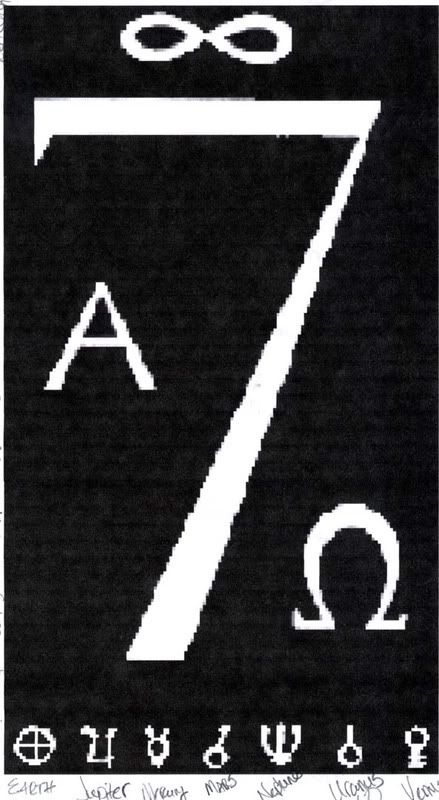


.jpg)
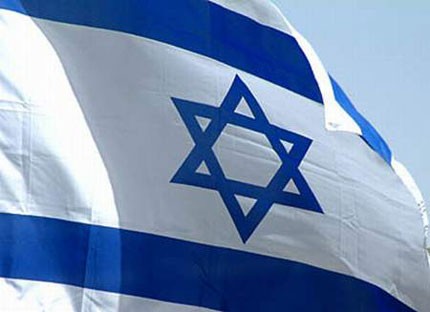

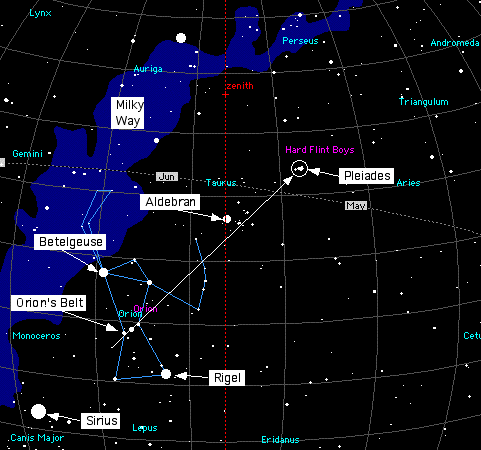

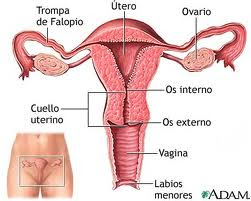














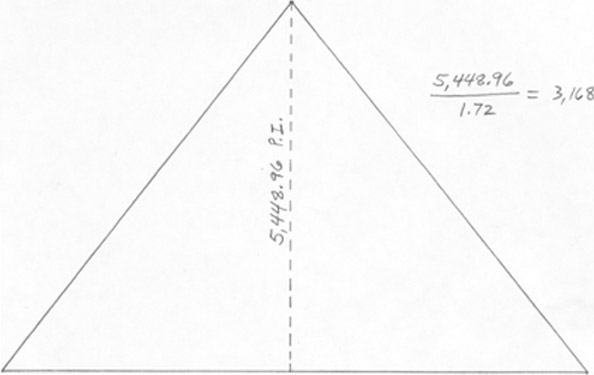

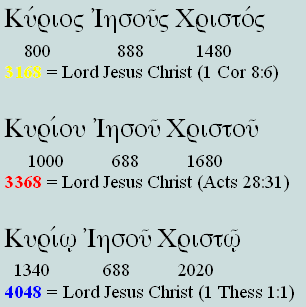



 Wednesday, April 15, 2009
Wednesday, April 15, 2009


